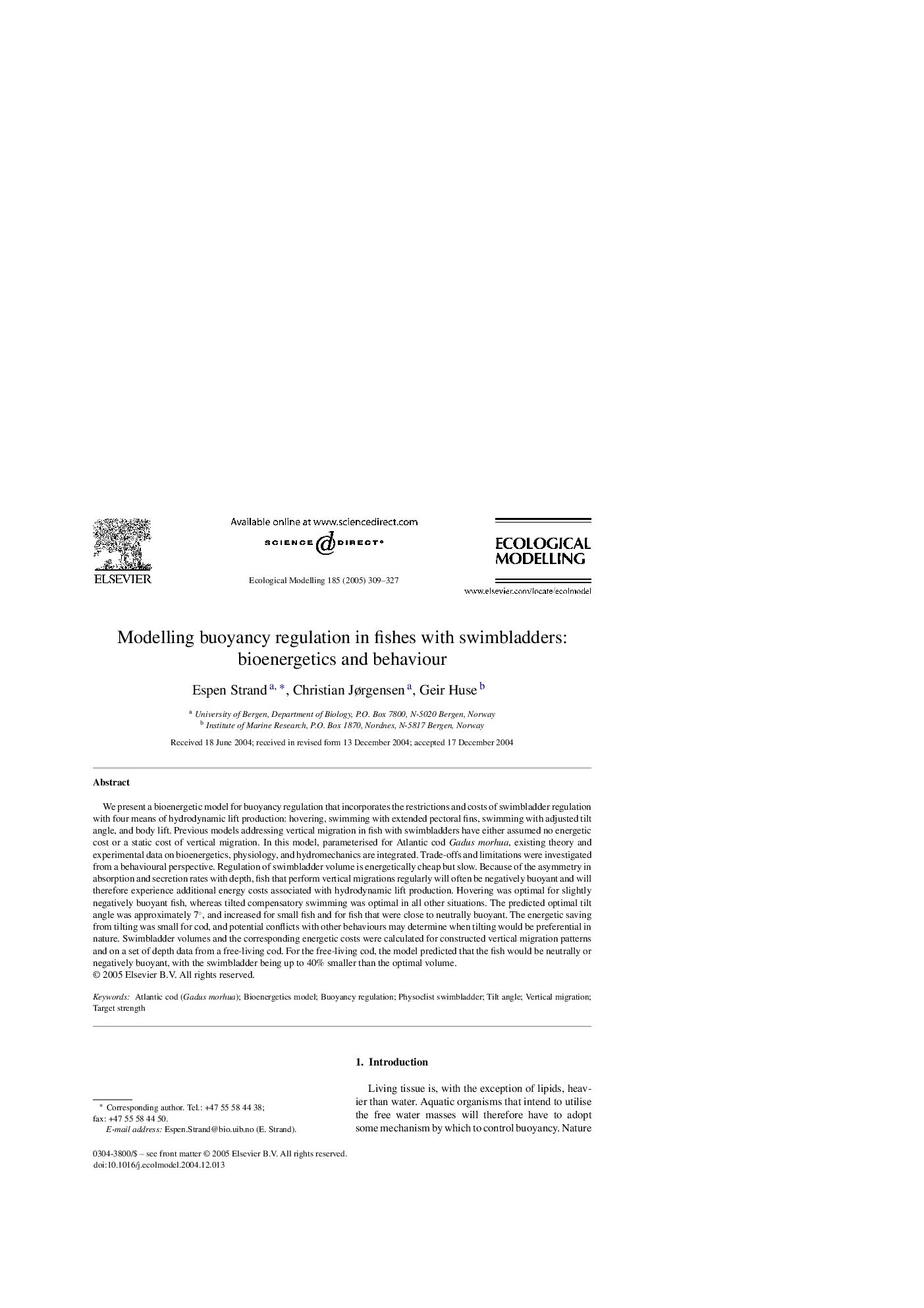| کد مقاله | کد نشریه | سال انتشار | مقاله انگلیسی | نسخه تمام متن |
|---|---|---|---|---|
| 9443392 | 1617577 | 2005 | 19 صفحه PDF | دانلود رایگان |
عنوان انگلیسی مقاله ISI
Modelling buoyancy regulation in fishes with swimbladders: bioenergetics and behaviour
دانلود مقاله + سفارش ترجمه
دانلود مقاله ISI انگلیسی
رایگان برای ایرانیان
کلمات کلیدی
موضوعات مرتبط
علوم زیستی و بیوفناوری
علوم کشاورزی و بیولوژیک
بوم شناسی، تکامل، رفتار و سامانه شناسی
پیش نمایش صفحه اول مقاله

چکیده انگلیسی
We present a bioenergetic model for buoyancy regulation that incorporates the restrictions and costs of swimbladder regulation with four means of hydrodynamic lift production: hovering, swimming with extended pectoral fins, swimming with adjusted tilt angle, and body lift. Previous models addressing vertical migration in fish with swimbladders have either assumed no energetic cost or a static cost of vertical migration. In this model, parameterised for Atlantic cod Gadus morhua, existing theory and experimental data on bioenergetics, physiology, and hydromechanics are integrated. Trade-offs and limitations were investigated from a behavioural perspective. Regulation of swimbladder volume is energetically cheap but slow. Because of the asymmetry in absorption and secretion rates with depth, fish that perform vertical migrations regularly will often be negatively buoyant and will therefore experience additional energy costs associated with hydrodynamic lift production. Hovering was optimal for slightly negatively buoyant fish, whereas tilted compensatory swimming was optimal in all other situations. The predicted optimal tilt angle was approximately 7°, and increased for small fish and for fish that were close to neutrally buoyant. The energetic saving from tilting was small for cod, and potential conflicts with other behaviours may determine when tilting would be preferential in nature. Swimbladder volumes and the corresponding energetic costs were calculated for constructed vertical migration patterns and on a set of depth data from a free-living cod. For the free-living cod, the model predicted that the fish would be neutrally or negatively buoyant, with the swimbladder being up to 40% smaller than the optimal volume.
ناشر
Database: Elsevier - ScienceDirect (ساینس دایرکت)
Journal: Ecological Modelling - Volume 185, Issues 2â4, 10 July 2005, Pages 309-327
Journal: Ecological Modelling - Volume 185, Issues 2â4, 10 July 2005, Pages 309-327
نویسندگان
Espen Strand, Christian Jørgensen, Geir Huse,